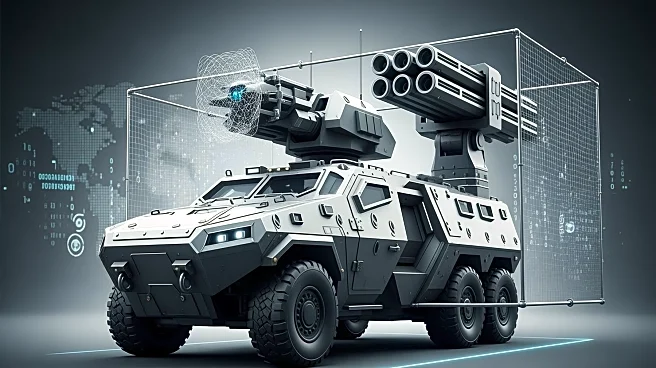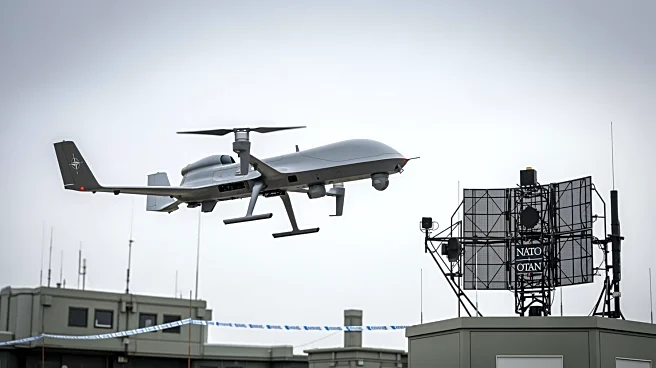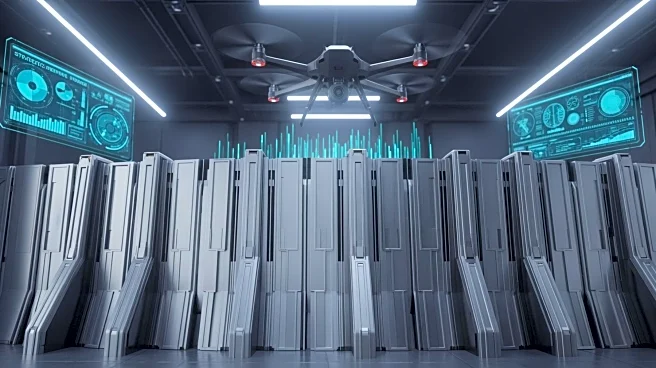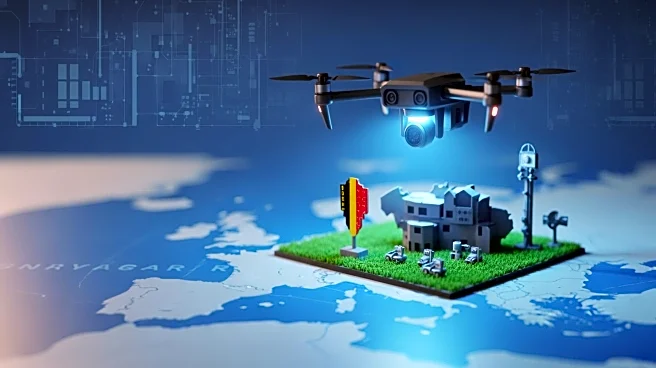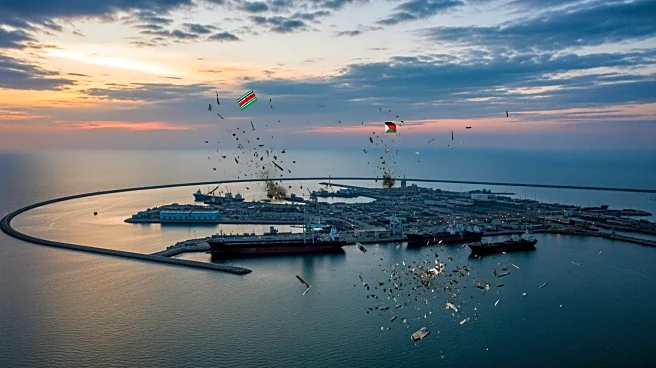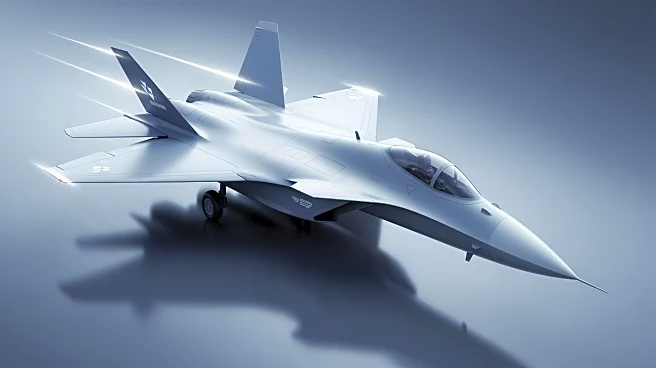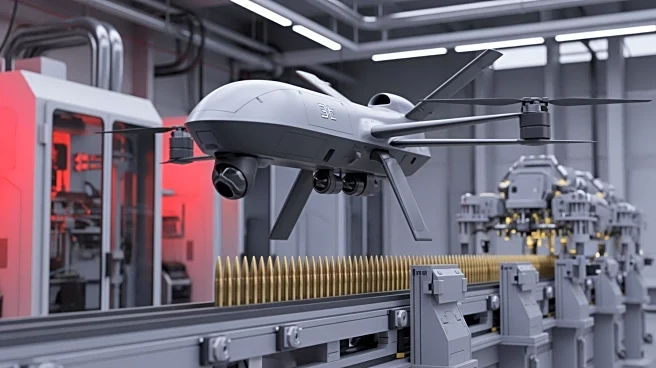What's Happening?
Defense manufacturers are increasingly focusing on developing anti-drone netting systems for armored vehicles, driven by the effectiveness of such systems in Ukraine. The United Arab Emirates-based TAC Armored Vehicles has introduced the TAC-Q-Net, a lightweight
cable mesh designed to protect against low-altitude drone strikes. This system is similar to improvised vehicle protection seen in Ukraine, such as metal cages and flexible nets. The TAC-Q-Net aims to serve as an additional physical barrier, preventing direct contact with the vehicle and deflecting drones. While effective in Ukraine, experts note that the risk of drone attacks is lower in other regions, such as the UAE. The system requires maintenance due to environmental challenges like humidity and sandy conditions.
Why It's Important?
The development of anti-drone netting systems highlights the growing concern over drone warfare and its impact on global security. As drones become more prevalent in military operations, the need for effective countermeasures is critical. These systems provide last-resort protection, complementing other defense strategies. However, their effectiveness diminishes with repeated strikes, emphasizing the need for continuous innovation in defense technology. The focus on anti-drone systems reflects broader trends in military procurement and international security, with implications for defense spending and strategic planning.
What's Next?
As the threat of drone attacks continues to evolve, defense manufacturers are likely to invest further in developing advanced countermeasures. This could lead to collaborations between countries and companies to enhance the robustness and effectiveness of these systems. Additionally, military forces may need to adapt their strategies to incorporate these technologies, potentially influencing training and operational protocols. The ongoing development of anti-drone systems may also prompt discussions on international regulations and agreements regarding drone warfare.
Beyond the Headlines
The use of anti-drone netting systems raises ethical and legal questions about the nature of modern warfare and the balance between defense and aggression. As technology advances, the line between defensive and offensive capabilities becomes increasingly blurred, challenging existing norms and regulations. The deployment of such systems may also influence public perception of military operations, highlighting the need for transparency and accountability in defense strategies.
